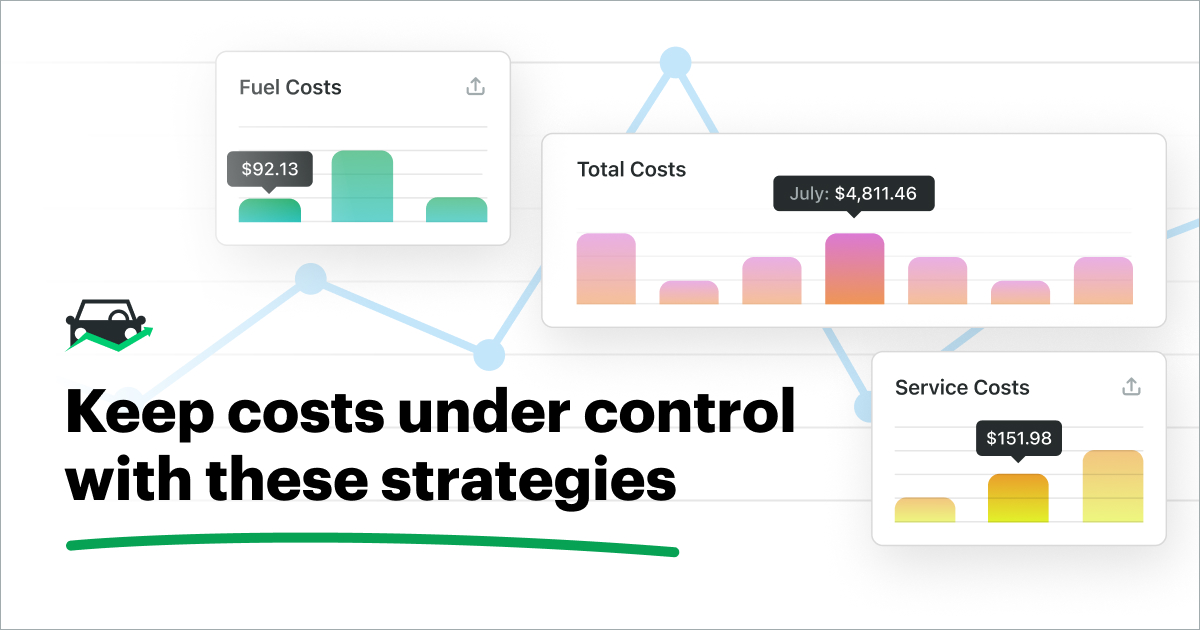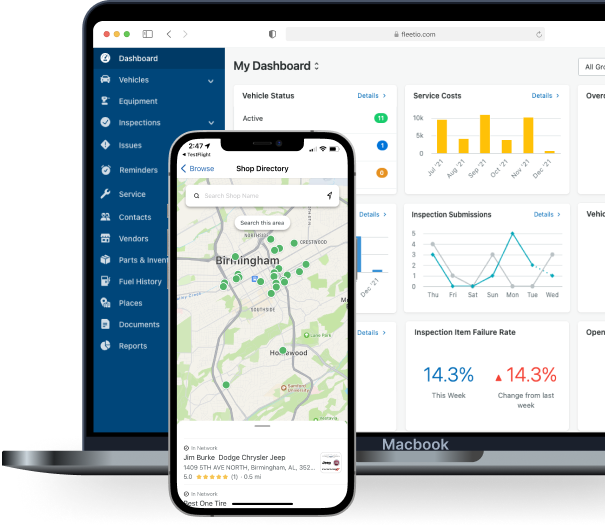Delivery fleets face a unique challenge when external forces raise their expenses. But with prudent strategy and some help from the right tools, delivery fleets can improve their fleet efficiency while reducing their costs.

Over the past year, nearly every fleet has felt the effects of rampant inflation, supply chain shortages and increased fuel prices. As a result, to offset their elevated expenses, many fleets have chosen to raise their prices in turn, often begrudgingly. While far from an ideal solution for fleets or their customers, passing along (at least a portion of) their new fleet operating costs has enabled these fleets to stay afloat during these turbulent times.
But for many delivery fleets, raising prices isn’t possible. Thousands of small businesses transport packages for companies like Amazon and FedEx at rates locked in by contract. Because of this, under most circumstances, spontaneous price adjustments in response to sudden economic shifts cannot be made.
How to reduce delivery fleet operating costs
Fortunately, delivery fleets aren’t without options when it comes to adapting to unforeseen market forces. Instead of raising their revenue through increased pricing, they can reduce their operating expenses in a wide variety of ways.
Let’s go over four tactics delivery fleets can use to rein in their costs.
1. Prioritize preventive maintenance
Few things are as debilitating to delivery fleets as unscheduled downtime. Repair costs can be exorbitant and late deliveries can shake the confidence of partnered organizations.
It’s for those reasons why delivery fleets should be disciplined in their preventive maintenance (PM). By addressing the needs of their vehicles before they get out of hand, fleets can minimize breakdowns and their associated costs.
One of the best ways for fleets to be consistent in their preventive maintenance is through the creation of maintenance schedules, but keeping track of planned service tasks can be challenging with only paper or spreadsheets. Fortunately, delivery fleet management software (FMS) makes scheduling, executing and recording service work much easier. Reminder notifications ensure that necessary PM tasks are never forgotten about and digital work order management makes tracking costs effortless.
2. Actively monitor fuel consumption and spending
Fuel prices may be unpredictable, but the fuel economy of your vehicles shouldn’t be. By keeping a watchful eye over their fuel usage and spending, fleets can detect anomalies that hamper profitability.
For example, if a fleet manager notices a vehicle’s fuel economy has taken a sudden decline, three possibilities should be of great concern to them.
First, a vehicle consuming fuel at a more rapid rate can be a sign of a mechanical problem. Said vehicle should be inspected as soon as possible to avoid a potential breakdown.
Second, a shift in fuel economy can be the result of a change in driving behavior. Sudden acceleration and braking burns through fuel far faster than a gradual approach that obeys the speed limit.
Lastly, fuel theft is more prevalent than many people assume. If given the opportunity, a small but significant percentage of drivers will fuel personal vehicles using company funds.
In all these instances, fleet managers can use data outliers to identify potential problems and intervene as necessary. Through digitization, fleet performance monitoring is made infinitely easier than with paper or spreadsheets. Managers can use FMS to run reports and view dashboards that surface anomalies with ease.
Take your delivery fleet to the next level
Start your free trial3. Take a data-driven approach to vehicle replacement
Knowing when to retain and when to part ways with a vehicle is vitally important for any delivery fleet. But when key information (e.g. estimated annual usage, fuel efficiency, service spend, etc.) regarding a vehicle is spread out across multiple paper documents or cumbersome spreadsheets, fleet managers often make replacement decisions without considering every factor.
By consolidating all information into a single source of truth, delivery fleet management solutions allow fleet managers to view everything there is to know about a vehicle in just a few clicks. From there, with the complete picture visible to them, fleet managers can make data-led decisions on disposing their vehicles.
4. Automate data entry
Paper documents have more than a few drawbacks, but one of their most egregious drawbacks is how time-consuming they are. Both technicians and fleet managers alike have far more productive methods of spending their time than filling out and keying in work orders.
With fleet management software, data collection is greatly streamlined. Forms can be completed in less time and the double work of transferring the information from a paper document into a spreadsheet is eliminated entirely. What’s more, costs associated with physical documents like paper, ink, and storage are removed from the equation as well.
By returning hours back to your personal each week, ridding fleets from the burden of paper increases productivity while reducing expense.
Fleet management systems can be game changers for delivery fleets. Discover what Fleetio has to offer by starting a free trial or requesting a demo today!




